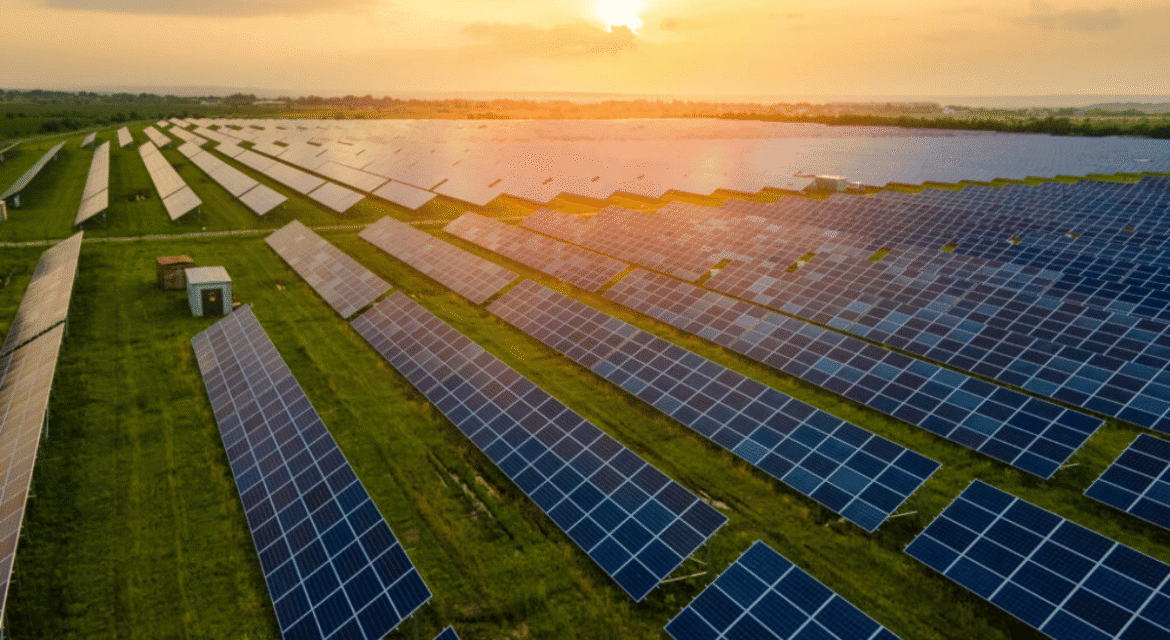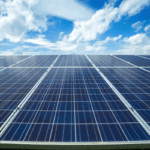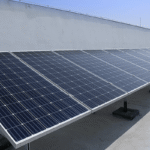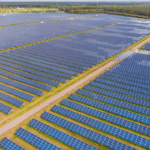The country is witnessing a dynamic shift in its energy portfolio today, and at the center of this change is a giant leap toward increased renewable energy. One such massive leap is the great initiative of establishing the Khavda Solar Park located in the Kutch region of Gujarat. Being ranked among India’s top solar power facilities, Khavda Solar Park is both a contribution to the country’s green agenda and the development of renewable energy around the globe.
The Vision Behind Khavda Solar Park
The population in India has been increasing over the years making the energy demands to increase due to industrialization. However, dependency on fossil energies has some setbacks, such as pollution and uncertainty of energy supply. These problems have inspired the government to focus on the promotion of renewable energy sources. Khavda Solar Park is very instrumental in helping India meet its intended target of generating 500 GW of Renewable energy by 2030.
The Khavda Solar Park is situated in Kutch, where the intensity of sunlight is high and is therefore suitable for the generation of solar power. This park aims at generating electricity through solar power on perhaps the largest scale ever set in India, thus taking the country closer to the promised goal of being at the forefront in the production of renewable energy.
Key Features of the Khavda Solar Park
1. Massive Energy Capacity
The Khavda Solar Park is expected to produce electricity with an installed capacity of 30 GW, which is expected to make it one of the biggest solar parks in the world. It shall go a long way in helping to mitigate the dependence of India on conventional energy.
2. Strategic Location
Set close to the India-Pakistan border, the solar park takes advantage of the Kutch area, which is largely desert, and frees up sufficient space for solar power generation since few obstacles can hinder the sun’s rays. The site is well connected with the national grid systems and hence stands well to deliver power within the nation.
3. Advanced Technology
Advanced technology solar panels and tracking systems help in getting optimal power from the solar panels. These technologies enable control of the optimal angle of the panels to catch the best sunlight at any given time of a given day.
4. Sustainability Initiatives
It also includes comprehensive sustainability features such as the use of water efficiencies for panel cleaning as well as provisions that enhance the conservation of biodiversity.
Benefits of the Khavda Solar Park
1. Environmental Impact
It is anticipated that the park will mitigate the reduction of millions of tons of carbon dioxide emission each year; shifting India’s carbon movement. This can be aligned with the effort to fight climate change around the world.
2. Energy Security
The generation of renewable energy in the operation of Khavda Solar Park is also a positive factor in the energy diversification and energy security of India, which does not have to rely on imported oil and gas to meet its energy needs.
3. Economic Growth
This has helped directly in the creation of widespread employment during the construction phase, and during phases of the operational phase of the project. It also creates a local employment base by attracting establishments connected with industries and services.
4. Technological Advancements
The widespread utilization of solar technology promotes the development of new renewable energy sources, increases performance, and decreases costs.
Challenges and Solutions
Altogether, the Khavda Solar Park is an innovative project, it has some of its drawbacks. Addressing these issues ensures the project’s long-term success:
Land Acquisition
Nomadic acquisition of large tracts of land can therefore cause conflict with residents or occupants of the land. The key to such concerns is open communication and a sound remuneration policy.
Environmental Concerns
Existing literature shows that large-scale solar plants pose a threat to ecological systems whereby the solar plants severely affect the neighboring environment. Measures that can be adopted to reduce these effects include; Characterizing native plant and animal species.
Maintenance and Upkeep
Subsequently, there are difficulties in equipment maintenance due to the conditions of the desert climate. High-quality materials and habilitative monitoring systems are used to enhance the durability of the various structures.
Grid Integration
To incorporate such a huge quantity of energy into the national electricity grid, good infrastructure is needed. Improvement of the transmission network as well as the substations is also a key consideration.
Khavda Solar Park: A Model for Future Projects
It can be stated that the successful development of Khavda Solar Park will help similar projects across India. It shows that the modern world must utilize solar energy on a very large scale and that it would be beneficial. Specific experiences gained through this project be it in terms of engagement with the community or the deployment of specific technology can be used to inform future work in renewable energy.
Currently, the Indian Government is targeting renewable power milestones; here emphasizing solar power production to meet the global level targets.
India is ambitious in the shift towards renewable energy through its policies and its partners around the world. Successful projects such as the International Solar Alliance as well as the National Solar Mission demonstrate a proactive approach of the country. These efforts include the Khavda Solar Park which has been a great boost for achieving renewable energy ambitions.
In addition, this project contributes to India’s commitment to the Paris Agreement when it comes to climate change actions. Energy produced from the Khavda Solar Park shall form an integral part of the solution to India’s need for electric energy as it seeks to embark on the transition towards cleaner sources of energy.
The Management of Private and Public Sector
Solar panel manufacturers need to come together with the government to develop and implement projects such as the Khavda Solar Park. On one hand, the government gives policy support and infrastructure, while on the other hand, private companies contribute competence, ideas, and money. This synergy is important in ensuring that renewable energy projects remain scalable across the country.
Conclusion
Khavda Solar Park is not just a solar project but a symbol of India’s commitment to green energy and the energy security of the nation. This mega-initiative of utilizing the sun’s energy can not only help in overcoming the energy crisis but is also a good example for the whole world.
With the gradual shift toward a low carbon economy, such installations as Khavda Solar Park demonstrate that it can be done. As the support and introduction of new technologies keep advancing, India is set to reach its goal for renewable energy and create a positive impact on sustainable energy in the world. Contact Fourcell Energy today at +91 6359333222, and let us help you save on electricity bills and increase your profits while taking the first step toward a brighter, greener tomorrow!








